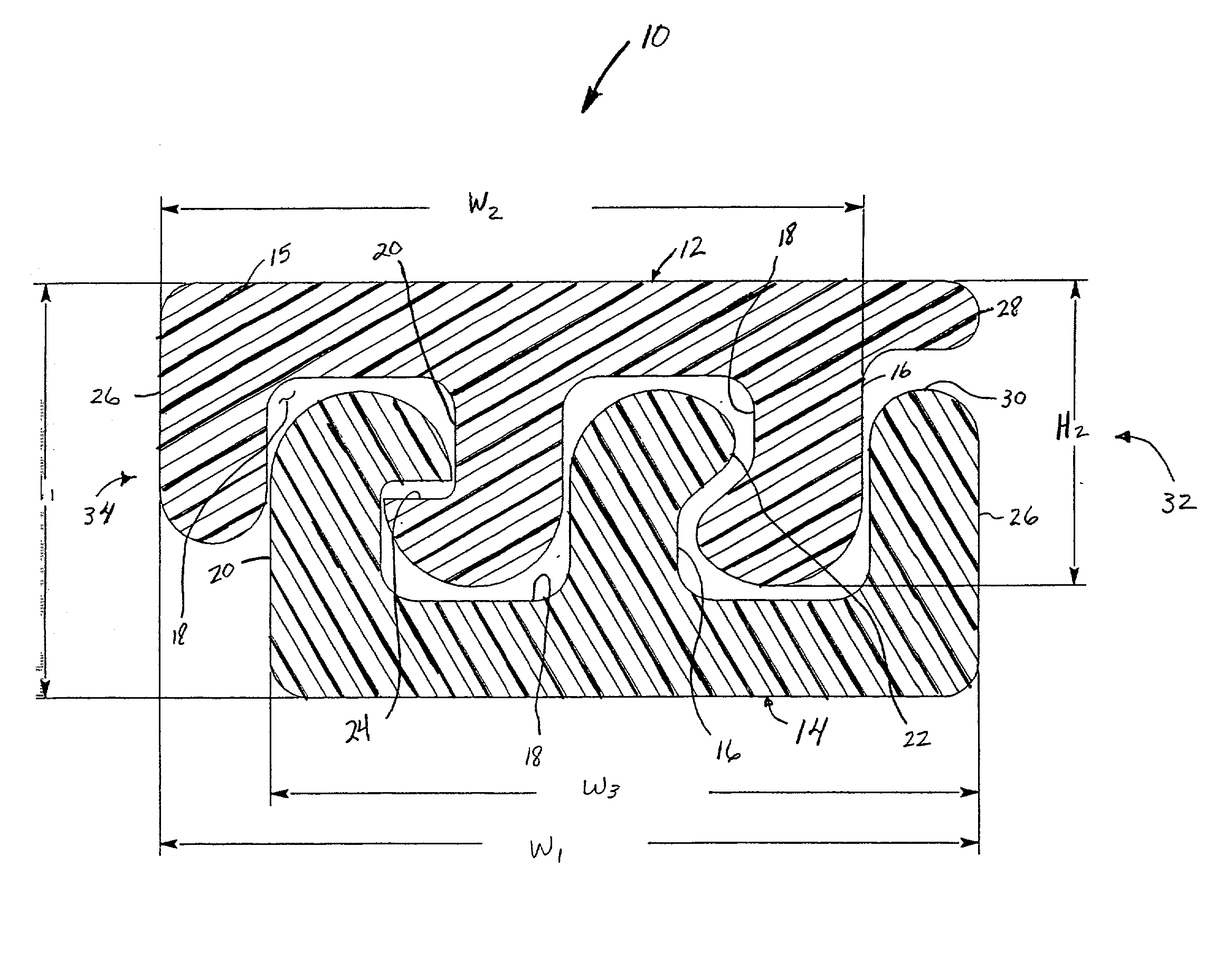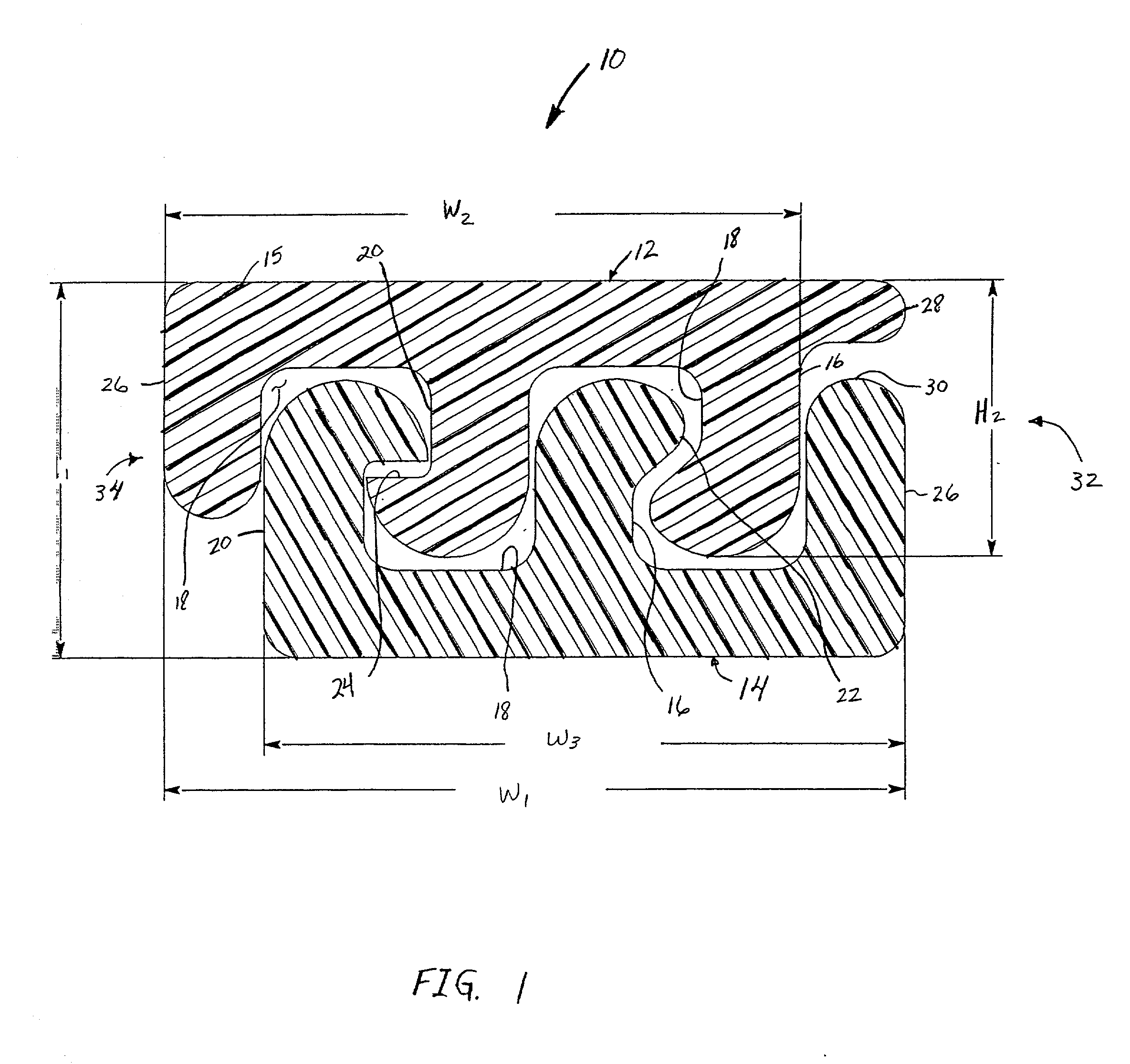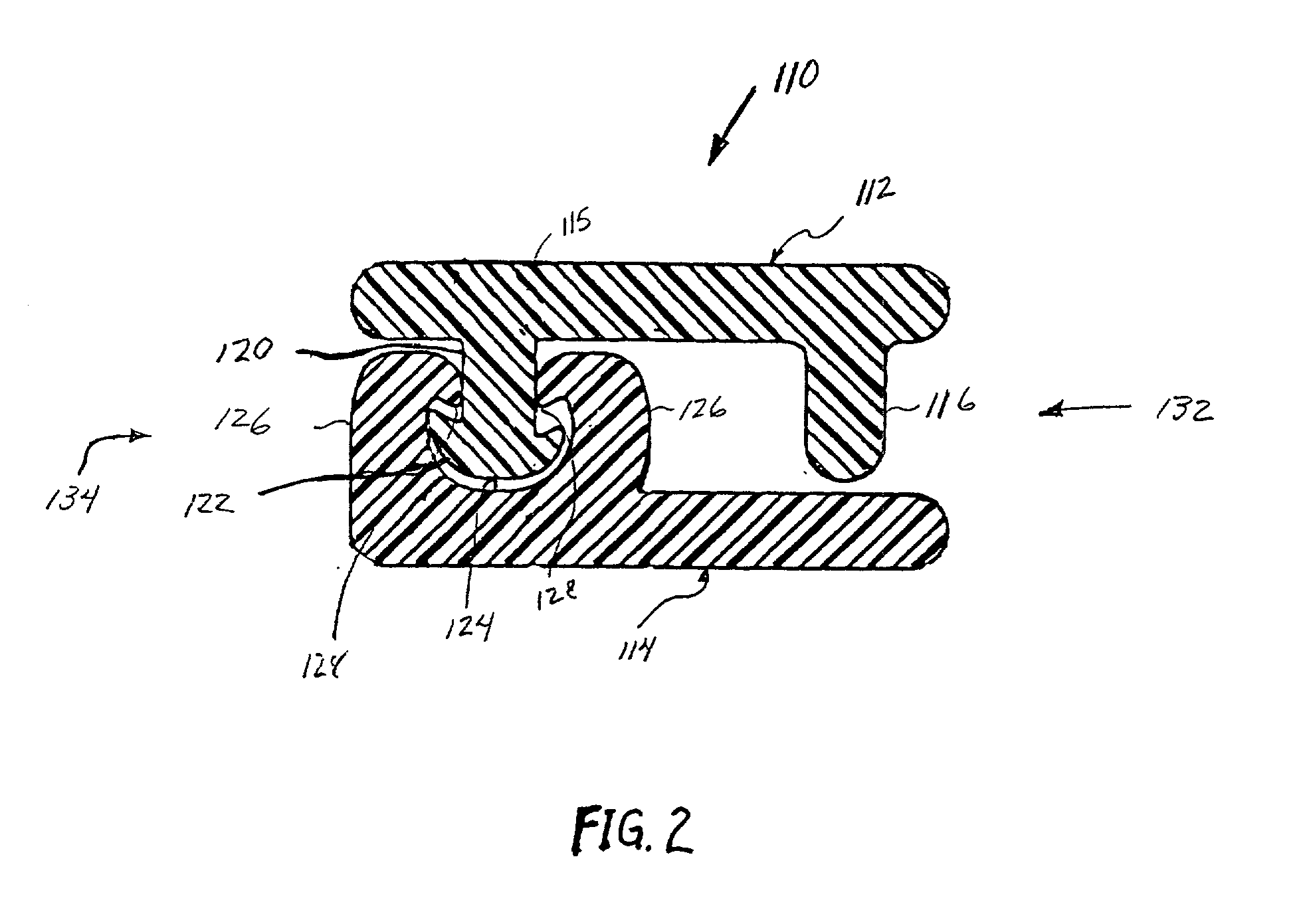Polypropylene recloseable zipper
a polypropylene and zipper technology, applied in the field of polypropylene zippers, can solve the problems of inability to directly fuse to polypropylene, inability to meet the requirements of packaging size, etc., and achieve the effect of flexibility and cost advantage in packaging size design
Inactive Publication Date: 2002-09-26
EATON INTELLIGENT POWER LIMITED
View PDF0 Cites 12 Cited by
- Summary
- Abstract
- Description
- Claims
- Application Information
AI Technical Summary
Benefits of technology
[0012] Another object of the present invention is to provide a polypropylene zipper with sufficient flexibility during the processing to be extruded and still have the ability to heat weld to a polypropylene film at reasonable temperatures without a tie layer or accelerant.
[0022] In contrast to that prior art approach, the present invention utilizes a novel blend which has a polypropylene random copolymer as a base resin for the zipper. It was found that a 100% polypropylene zipper is too stiff for processing in a manner similar to a polyethylene zipper. Even if one were able to successfully extrude the 100% polypropylene zipper, it would require heat welding to the polypropylene film at relatively high temperatures as compared with a polyethylene zipper. As mentioned previously, high temperatures employed in the thermal fusion process can cause thermal deformation in the profiles in the zipper strips which then interferes with the interlocking of the strips. During the heat sealing of the zipper to the bag, it is often desirable that the temperature of the base portion of the profile that is in contact with the film material reach a point where the bag film and base portion fuse by melting slightly. Excessive melting may be problematic if profiles deform during the thermal fusion to the bag. Similarly, zippers having a pair of strips with small elements and close tolerances are vulnerable to deformation during this process. The polypropylene zipper in accordance with the present invention employs a formulation that allows for zipper flexibility in the extruding process as well as the ability to heat weld to a polypropylene film at temperatures similar to polyethylene zippers without any requirement for a tie layer.
[0025] The flexible modifier is preferably a semi-crystalline ethylene copolymer like a FLEXOMER.RTM., polyolefin DFDB-1085 Natural or DFDA-1010 Natural 7, which are commercially available from Union Carbide Corporation in pellet form. Additionally, the blend of resin of the present invention uses a slip component, preferably a Techmer PM 1914E4 slip component that employs preferably oleamide as a slip additive in a carrier resin of low density polyethylene (LDPE). This component is also commercially available from Techmer PM LLC Polymer Modifiers. When these three components are blended together, polypropylene zipper strips can be extruded with sufficient flexibility and weldability to that of a polyethylene zipper.
[0030] It should be understood that the recloseable polypropylene zipper in accordance with the present invention may be constructed in any form of closure arrangement suitable for sealing a polymeric or thermoplastic bag or package. The recloseable polypropylene zipper in accordance with the present invention is a homogenized blend of resin component that allows the zipper to be directly weldable to a polypropylene film or fusibly compatible thermoplastic material.
[0031] Advantageously, the polypropylene zipper in accordance with the present invention may be extruded similar to that of a polyethylene zipper and is less expensive than a co-extrusion process which is presently employed for a closure arrangement for a polypropylene material. As a further advantage, the dimensions of the polypropylene zipper of the present invention may be smaller than prior art closure arrangements and offers cost advantages and flexibility in packaging size designs over a co-extruded zipper used for a polypropylene film.
Problems solved by technology
It is further known in the industry that some materials are fusibly incompatible.
While polyethylene may be fused to polyethylene, it cannot be directly fused to polypropylene.
The co-extrusion process associated with making those materials of the prior art approach is expensive, time consuming, and requires application of the accelerant to a large weld area for the process to work effectively.
Method used
the structure of the environmentally friendly knitted fabric provided by the present invention; figure 2 Flow chart of the yarn wrapping machine for environmentally friendly knitted fabrics and storage devices; image 3 Is the parameter map of the yarn covering machine
View moreImage
Smart Image Click on the blue labels to locate them in the text.
Smart ImageViewing Examples
Examples
Experimental program
Comparison scheme
Effect test
example ii
[0035] The polypropylene component such as Amoco 8244 can range on a weight percent basis from about 66% to about 84% of the blend. The flexible modifier such as Flexomer DFDA-1010 Natural 7 or DFDB-1085 content can range from about 15% to about 30% of the blend on a weight percent basis. The slip component such as Techmer PM 1914E4 may range from about 1% to about 4% of the blend on a weight percent basis.
the structure of the environmentally friendly knitted fabric provided by the present invention; figure 2 Flow chart of the yarn wrapping machine for environmentally friendly knitted fabrics and storage devices; image 3 Is the parameter map of the yarn covering machine
Login to View More PUM
 Login to View More
Login to View More Abstract
A polypropylene closure arrangement for flexible packages comprises a blend having a polypropylene random copolymer as a base resin with a flexible modifier, and a slip component. The polypropylene closure arrangement 10, 110 is sufficiently flexible to be extruded and coiled around guide wheels similar to the fusion process of a polyethylene closure arrangement. The polypropylene closure arrangement in accordance with the present invention has the ability to be fusibly attached to a polypropylene film or other fusibly compatible thermoplastic material launch conditions.
Description
[0001] 1. Field of the Invention[0002] The present invention relates in general to a polypropylene recloseable zipper, and in particular to a polypropylene recloseable zipper for flexible bags or packages that are resealable.[0003] 2. Description of the Related Art[0004] The term "zipper" as used herein is intended to encompass any closure arrangement for a bag or package. These bags are used in a wide variety of consumer packaging applications and are usually made from a polymeric or thermoplastic material. The zipper is usually located on one side near the edge and has two strips with profiles, such as complementary projections and grooves, that are constructed to interlock with proper alignment. The recloseable zipper allows the bag to be resealable when contents are removed or added. The zipper is preferably flexible as is the bag and is firmly attached to the bag. While fusible attachment is the preferred attachment, there exist other ways of attaching the zipper to the bag, fo...
Claims
the structure of the environmentally friendly knitted fabric provided by the present invention; figure 2 Flow chart of the yarn wrapping machine for environmentally friendly knitted fabrics and storage devices; image 3 Is the parameter map of the yarn covering machine
Login to View More Application Information
Patent Timeline
 Login to View More
Login to View More IPC IPC(8): A44B19/16
CPCA44B19/16B65D33/2541Y10T24/45157Y10T24/45168
Inventor SHAFFER, GREGORY RICHARDSTEMPKA, CHARLESHARRIS, LISA MAE
Owner EATON INTELLIGENT POWER LIMITED
Features
- R&D
- Intellectual Property
- Life Sciences
- Materials
- Tech Scout
Why Patsnap Eureka
- Unparalleled Data Quality
- Higher Quality Content
- 60% Fewer Hallucinations
Social media
Patsnap Eureka Blog
Learn More Browse by: Latest US Patents, China's latest patents, Technical Efficacy Thesaurus, Application Domain, Technology Topic, Popular Technical Reports.
© 2025 PatSnap. All rights reserved.Legal|Privacy policy|Modern Slavery Act Transparency Statement|Sitemap|About US| Contact US: help@patsnap.com



